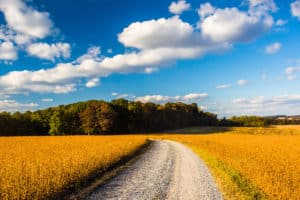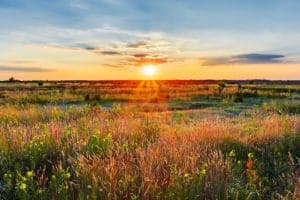I talked with an old friend last week about selling a large New England farm that’s been in his family since the 1930s. The farm is in a pretty setting, at the foot of publicly owned mountains. Land prices have risen dramatically during the last 15 years, driven by second-home buyers and retirees from southern New England and, primarily, the Boston area.
Of the 300 or so acres, about one-third has been used for cattle grazing and haying. This area is bounded on two sides by state-maintained highway. It is flat. It’s not particularly productive dirt, but it has dramatic views, easy access and many potential lots. The rest of the ground is a mix of woods and wetlands, which is not suitable for much of anything except recreation.
My friend placed the agricultural field in a conservation easement that prohibits any use other than agricultural. Not a single house is permitted to be built in perpetuity. He did this with the best of intentions some years ago. His health has changed for the worse as he’s gotten older. His income is limited. The farm is his major asset, and most of its value was in the 100 acres of field.
Without this easement, a developer might pay $10,000/acre for the right to divide it into five to ten second-home lots. With the easement in place that keeps this marginal farmland as marginal farmland, the price might be $1,000/acre on a really good day for the seller. My friend’s life would be a lot more comfortable going forward with $900,000 more in gross sale revenue. Of course, sale to a developer means five to ten newly built second homes where hay once grew.
At the time he placed this easement on his land, he wanted to preserve the 100 acres as open space and keep it in agricultural uses. He got tax benefits for the easement. Now he needs the money. Now he’s stuck with the personal consequences of what I would consider a questionable choice.
Many good reasons exist to place conservation easements on property. Owners, however, must consider the long-term consequences for themselves and their heirs of prohibiting all development forever.
Had my friend allowed one residence to be built on the 100 acres, the value of the easement would have been marginally reduced. But he would have been able to sell the property in his time of need for maybe $7,500/acre or more. The land would have still been kept primarily agricultural and open.
I have seen other cases where economic fortunes have turned against a landowner whose last asset was land–burdened with a conservation easement. The surviving spouse and the heirs received substantially less inheritance than the calculation at the time when the easement was donated.
I’m interested to hear from advocates on both sides of this question.
This content may not be used or reproduced in any manner whatsoever, in part or in whole, without written permission of LANDTHINK. Use of this content without permission is a violation of federal copyright law. The articles, posts, comments, opinions and information provided by LANDTHINK are for informational and research purposes only and DOES NOT substitute or coincide with the advice of an attorney, accountant, real estate broker or any other licensed real estate professional. LANDTHINK strongly advises visitors and readers to seek their own professional guidance and advice related to buying, investing in or selling real estate.









In your article “The implications of a conservation easement”, you indicate that the easement is permanent, i.e will exist in perpetuity. The length of time of the easement, whether in perpetuity or for a specified period of time, i.e. say 10 years, etc., is determined by the terms and conditions negotiated by the land owner at the time the land is placed in the easement.
An easement permits the holder certain rights regarding the land for specified purposes while the ownership of the land remains with the private property owner. A conservation easement is designed to exclude certain activities on private land, such as commercial development or residential subdivisions. Its primary purpose is to conserve natural or man-made resources on the land. The easement itself is typically described in terms of the resource it is designed to protect (e.g., agricultural, forest, historic, or open space easements).
The easement is a legally binding covenant that is publicly recorded and runs with the property deed for a specified time or in perpetuity. It gives the holder the responsibility to monitor and enforce the property restrictions imposed by the easement for as long as it is designed to run. An easement does not grant ownership nor does it absolve the property owner from traditional owner responsibilities, i.e. property tax, upkeep, maintenance, or improvements.
The easement doesn’t have to be permanent, but can be for a specified time. During the life of the easement, the property owner can continue to use the land, sell the land (with the easement in place), or pass it on to his/her heirs.
There is so much to consider when taking a logical approach to any type of easements. In the Western States, you should run a title chain all the way back to the Land grant, there were restrictions placed by congress on all old rail parcels uneven numbered sections of lands, which are still servient to the dominant even numbered sections of land, also there could be reverse condemnation proceeding which re cited the land grant restrictions, and mineral rights… I love this stuff.